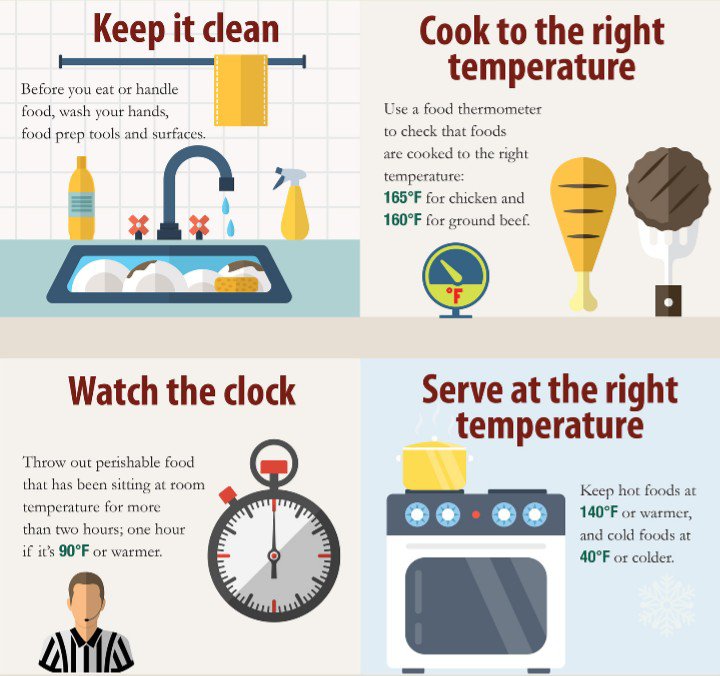Word Up News Food and Safety Corner.
Food Reporter.
Chef Luciano.
Many raw foods, most notable poultry, meats, eggs and unpasteurized milk, may be contaminated with disease-causing organisms. Thorough cooking will kill the pathogens, but remember that the temperature of all parts of the food must reach at least 70 °C. If cooked chicken is still raw near the bone, put it back in the oven until it’s done – all the way through. Frozen meat, fish, and poultry, must be thoroughly thawed before cooking.

- Always refrigerate perishable food within 2 hours—1 hour when the temperature is above 90 °F (32.2 ºC).
- Check the temperature of your refrigerator and freezer with an appliance thermometer. The refrigerator should be at 40 °F (4.4 ºC) or below and the freezer at 0 °F (-17.7 ºC) or below.
- Cook or freeze fresh poultry, fish, ground meats, and variety meats within 2 days; other beef, veal, lamb, or pork, within 3 to 5 days.
- Perishable food such as meat and poultry should be wrapped securely to maintain quality and to prevent meat juices from getting onto other food.
- To maintain quality when freezing meat and poultry in its original package, wrap the package again with foil or plastic wrap that is recommended for the freezer.
- Canned foods are safe indefinitely as long as they are not exposed to freezing temperatures, or temperatures above 90 °F. If the cans look ok, they are safe to use. Discard cans that are dented, rusted, or swollen. High-acid canned food (tomatoes, fruits) will keep their best quality for 12 to 18 months; low-acid canned food (meats, vegetables) for 2 to 5 years.
